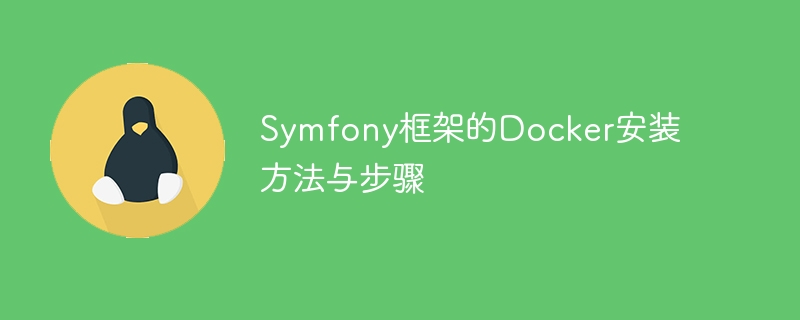

Docker installation methods and steps for the Symfony framework
Introduction:
Docker is a popular containerization platform that can help us quickly build a development environment. Symfony is an excellent PHP framework with powerful functions and extensibility. This article will introduce how to use Docker to install and configure the Symfony framework, and provide detailed steps and code examples.
Step 1: Install Docker and Docker Compose
First, we need to install Docker and Docker Compose locally. Please download and install the appropriate version according to your operating system. Once the installation is complete, you can verify it using the "docker" and "docker-compose" commands on the command line.
Step 2: Create a Symfony project
Before proceeding to the next step, we need to create a Symfony project first. Open a terminal, go to the directory where you want to save the project, and run the following command:
$ composer create-project symfony/website-skeleton my_project_name
This will create a new Symfony project using Composer and save it in a folder called "my_project_name" .
Step 3: Create Docker configuration file
Create a file named "docker-compose.yml" in the project root directory to configure the Docker container. In this file, we need to define at least one PHP container and one MySQL container. The following is a sample configuration file:
version: '3'
services:
php:
image: php:7.4-fpm
volumes:
- .:/var/www/html
ports:
- 8000:8000
depends_on:
- mysql
mysql:
image: mysql:latest
restart: always
volumes:
- ./data:/var/lib/mysql
environment:
- MYSQL_ROOT_PASSWORD=your_mysql_root_password
- MYSQL_DATABASE=your_database_name
- MYSQL_USER=your_mysql_username
- MYSQL_PASSWORD=your_mysql_passwordPlease note that replace "your_mysql_root_password", "your_database_name", "your_mysql_username" and "your_mysql_password" with your own values. In addition, we also mapped the project code folder to the "/var/www/html" path of the PHP container so that the code can be edited in real time.
Step 4: Build and start the container
Enter the project root directory in the terminal, and then run the following command to build and start the container:
$ docker-compose up -d
This command will automatically download and build the required image and start the container. You can check the status of the containers using the following command:
$ docker-compose ps
If everything goes well, you will see both containers (php and mysql) running normally.
Step 5: Install Symfony's dependency package
Run the following command in the container to install Symfony's dependency package:
$ docker-compose exec php composer install
This command will use Composer to install all the dependencies required for the Symfony project Bag.
Step 6: Access the Symfony application
Enter "http://localhost:8000" in the browser, you will see the Symfony welcome page. This indicates that the Symfony application has been successfully installed and running.
Conclusion:
This article provides detailed steps and code examples for installing and configuring the Symfony framework using Docker. Using Docker makes it easier to build and manage the Symfony development environment, improving development efficiency and project portability. I hope this article can help you successfully install and use the Symfony framework. Good luck writing great Symfony applications!
The above is the detailed content of Docker installation methods and steps for Symfony framework. For more information, please follow other related articles on the PHP Chinese website!
 The difference between k8s and docker
The difference between k8s and docker
 What are the methods for docker to enter the container?
What are the methods for docker to enter the container?
 What should I do if the docker container cannot access the external network?
What should I do if the docker container cannot access the external network?
 What is the use of docker image?
What is the use of docker image?
 what is dandelion
what is dandelion
 How to use the greatest function
How to use the greatest function
 How to open scope permissions
How to open scope permissions
 Check port occupancy in linux
Check port occupancy in linux




